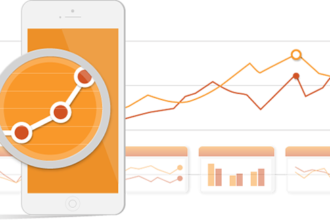Web analytics technology has evolved in remarkable ways over the last 20 years. Web-Counter, the first traffic analytics tool, was launched in 1996. While it was great for vanity purposes, it offered few insights to help brands boost their ROI.
Newer tools have proven to be much more versatile and beneficial. Hundreds of thousands of brands have relied on Google Analytics, Crazy Egg and other web analytics solutions to optimize their marketing campaigns. However, few companies understood the link between analytics technology and ROI until this past month.
Forbes Insights recently published a report on the efficacy of web analytics technology. The report, titled Data & Advanced Analytics: High Stakes, High Rewards, showed that over 66% of companies using sophisticated web analytics strategies have growth rates of 15% or higher. Another 63% of brands reported operating margin increases of 15% or higher.
Brands use analytics in a variety of ways. They use it to determine the uptime of their web hosting, conversion rates and customer engagement. All of these factors influence their ROI.
However, there is still some clear room for improvement. Here are some of the key takeaways from the report.
Some Brands Are More Adapt at Using Analytics than Others
As analytics technology has evolved over the past 20 years, it has yielded more valuable data. However, features of analytics tools aren’t the only things that matter. Brands must master the technology to fully realize the benefits.
According Forbes Insights, Chinese firms have a better track record for using analytics technology. “Based on the maturity assessment scores, China maintains the number one spot in the ranking, while the United States comes in second, up from fifth, and the UK holds steady in third place.”
Poor Collaboration is a Key Limiting Factor of Analytics Technology
A successful analytics strategy depends on effective communication between analytics experts, marketers, developers and other key staff. The report showed that poor collaboration was one of the biggest problems that negatively affected web analytics campaigns.
The report showed that 41% of companies lack the collaboration needed between these experts to use analytics tools to their fullest potential. However, they have made progress over the past year. In last year’s Data & Advanced Analytics: High Stakes, High Rewards, only 16% of brands had clear communication between analytics experts and their counterparts in finance, HR and supply chain management.
Bruce Rogers, Forbes Chief Insights Officer states that brands will need to be aware of these hurdles and take the necessary steps to address them in the future.
“The top pain points in successfully imbedding analytics strategically throughout the business continue to be around the human element, not the technology. Collaboration, culture and skills were cited as key hurdles throughout the business life cycle, creating a wider divergence between organizations that are focusing on the people aspects – and separating winners from losers.”
Brands should hold a regular conference or audio meeting to discuss their analytics strategy with their colleagues.
Brands Still Lack Clear Analytics Strategies
The results brands have witnessed from their data analytics campaigns are compelling, especially since many of them lack clearly defined strategies. However, these brands shouldn’t be complacent. They risk losing their competitive edge as other companies refine their analytics strategies in the coming years.
KPMG recently commissioned a report that showed many executives feel their company isn’t using analytics technology effectively. Forbes Insights’ report echoed those findings. Brands will need to have more clearly articulated strategies to get the most out of their analytics.
Their strategies should focus on seeing how well they are reaching specifc marketing goals. For example, if a company chose to buy Instagram followers to expand their brand reach, their analytics should focus on brand reach metrics, such as follower engagement, follower count and time on site.
How Can Brands Build Further Improve their Analytics Strategies?
As Rogers emphasized, analytics campaigns aren’t built overnight. Brands need to set clear goals and adopt a data-centric culture. MurliBuluswar, Chief Science Officer of AIG told McKinsey that this is the biggest challenge brands face when executing an analytics strategy.
Buluswar said that brands are often paralyzed by fear of change, so they must force themselves to take a leap of faith and rely on technology instead of managerial heuristics. They must make sure all employees understand the value of analytics and help contribute to it.
Developing a successful analytics strategy will take time, but is well worth the investment.








